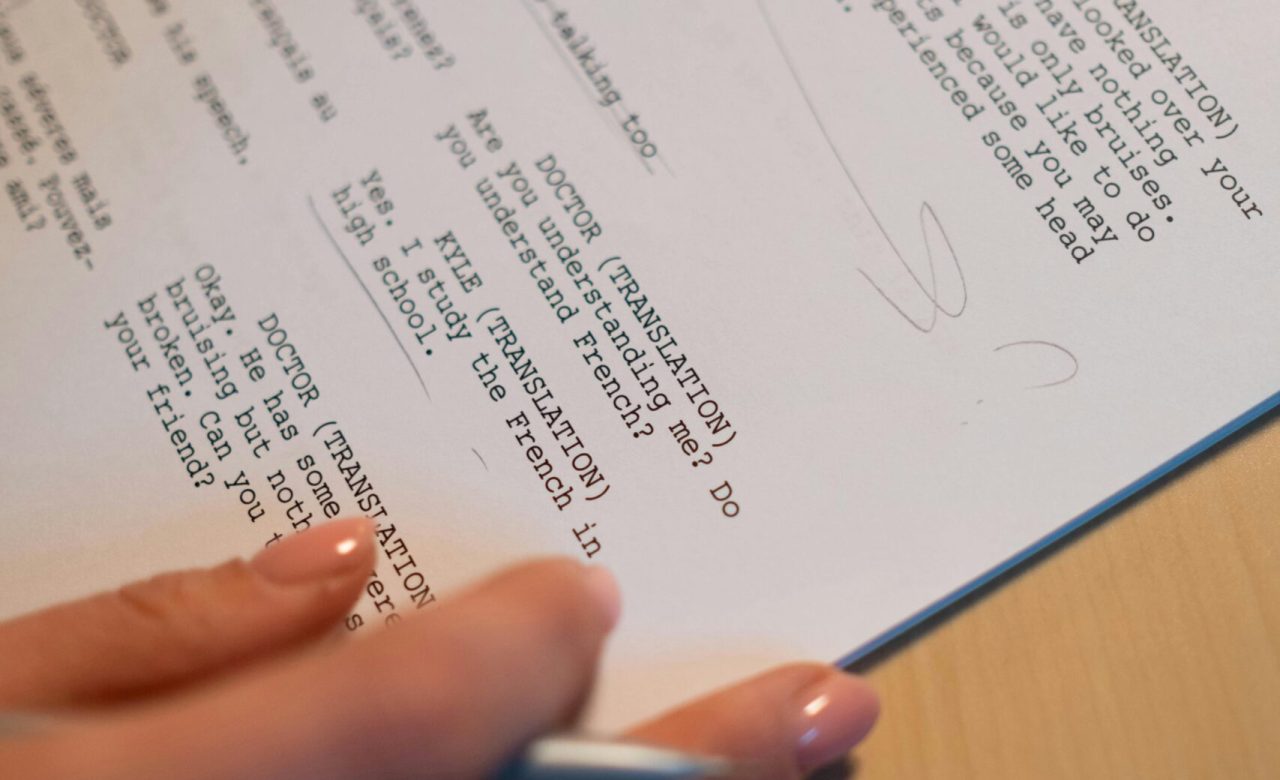How to Use Parentheticals in Screenplays
Learning how to use parentheticals in screenplays is something that aspiring screenwriters and filmmakers must work on if they’re ever going to make it into the professional film industry. The use of proper formatting when writing screenplays is crucial. Parentheticals have a variety of uses within the screenplay. But do you know how to use parentheticals in screenplays in the correct manner? Do you even know what parentheticals are?

Beyond excellent dialogue, screenplays must convey a lot of information to the cast and crew. Screenwriters are responsible not only for establishing the dialogue communication in the screenplay.
But also in dictating the complex emotions among characters. As well as who they’re communicating with throughout the scene.
What are Parentheticals in Screenplays?
Parentheticals, are the superstars behind the screenplay scene that screenwriters use to make sure their intentions for the dialogue, emotions, and character interactions within the page are properly reflected within the story.
Don’t confuse parentheticals with actual “superstars” though, they’re not people! They’re actually words that can be jotted in under a character’s name in order to properly describe the intention of the screenwriter as to how the character is expected to say a line or act while saying a line.
How to Use Parentheticals in Screenplays
Screenplays use parentheticals in a variety of different ways. Formatting is key, as is making sure that the use of parentheticals isn’t overdone.
While many screenwriters can get carried away with the idea of providing extreme details as to what, where, and how every character does or feels in a film.
Much of this is still likely to get lost in production and post-production editing. Instead, consider the use of the parenthetical only for which it’s most important.
Clarification
Parentheticals can be used in screenplays to help others understand your characters and the expectation of them, but any form of “directing” with your parenthetical is absolutely frowned upon.
Thus, screenwriters, even novice screenwriters, are encouraged to save their parentheticals for when they are necessary purely to clear up any questions that may not be fully covered by the character’s dialogue, the situation, or the subtext of what’s taking place on the page at the time.
Here are a few ways to use parentheticals in screenplays without going overboard:
- Keep it to a minimum.
- Eliminate any parentheticals that start with “Thinking, remembering, pondering, wondering, feeling, reflecting, realizing, etc” This should be clear from your screenplay.
- Exclude entrances and exits. These should be clear from your screenplay.
- Keep stage business in the dialogue, it has no play in the parenthetical! Use an action line instead.
- Keep parentheticals down to 1 line and use the left slug!
- Let the actors decide how to speak the lines, if your script doesn’t provide enough context, maybe consider starting there!
Summary
Now you might be thinking, “I thought this was a post that was about how to use parentheticals in screenplays?” And you’re right, it is! The best way to use parentheticals in screenplays is to a minimum, only where necessary. And NEVER to play the part of the Director!


